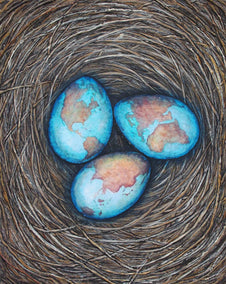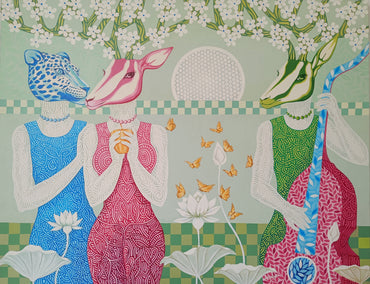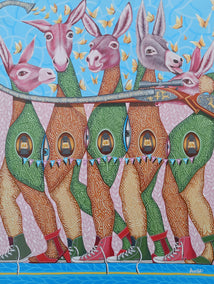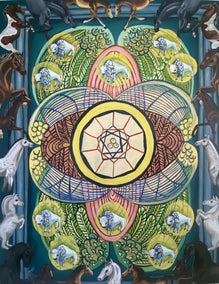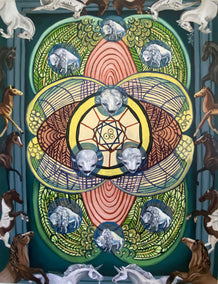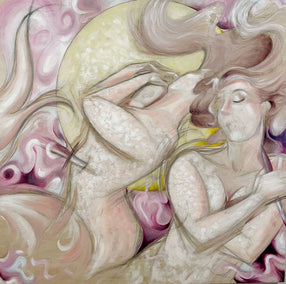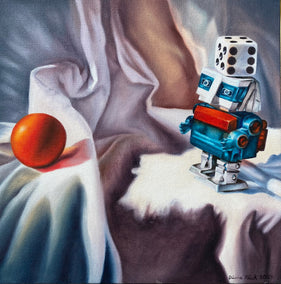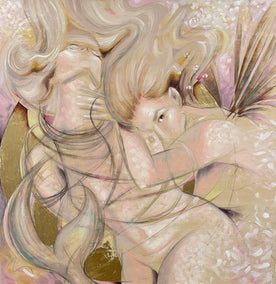Belgian-born Rene Magritte is among Surrealism’s most prominent practitioners of the style. His iconic self-portrait, The Son of Man, depicts a man in an overcoat and bowler hat before a low seawall, the sea, and an overcast sky. A large green apple obscures his face, though his eyes peer out over the edge. The left arm bends backwards at the elbow. In a 1965 radio interview, Magritte, described it this way:
“At least it hides the face partly well, so you have the apparent face, the apple, hiding the visible but hidden, the face of the person. It's something that happens constantly. Everything we see hides another thing; we always want to see what is hidden by what we see. There is an interest in that which is hidden and which the visible does not show us. This interest can take the form of a quite intense feeling, a sort of conflict, one might say, between the visible that is hidden and the visible that is present.”
The Son of Man has been emulated for many years in art, film, and popular culture.
Norman Rockwell’s tribute to the painting was titled Mr. Apple, where a man’s head is not obscured, but completely replaced by a red apple.
Magritte’s painting appears a number of times in the 1999 remake of The Thomas Crown Affair, initially when Crown and Catherine Banning are seen walking through the museum. As Crown typically wears a bowler, she quips that it is Crown’s portrait. In the final robbery scene, men in trench coats and bowler hats carry briefcases throughout the premises to confuse security.
The 2006 film Stranger Than Fiction, starring Will Ferrell, Maggie Gyllenhaal, Dustin Hoffman, Queen Latifah, and Emma Thompson, references the painting.The IRS agent played by Will Ferrell is often seen with an apple in his mouth while running for his bus, and he stands before a wall painted to resemble the sky in conversation with a psychiatrist.




























